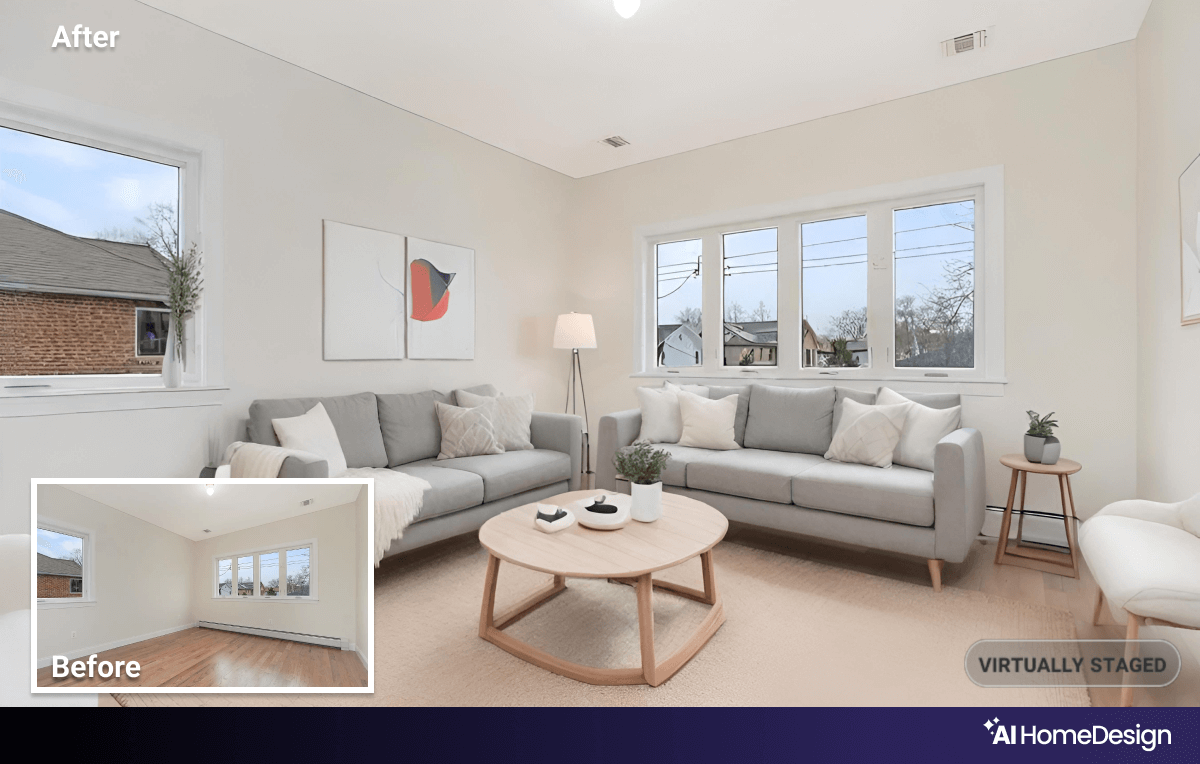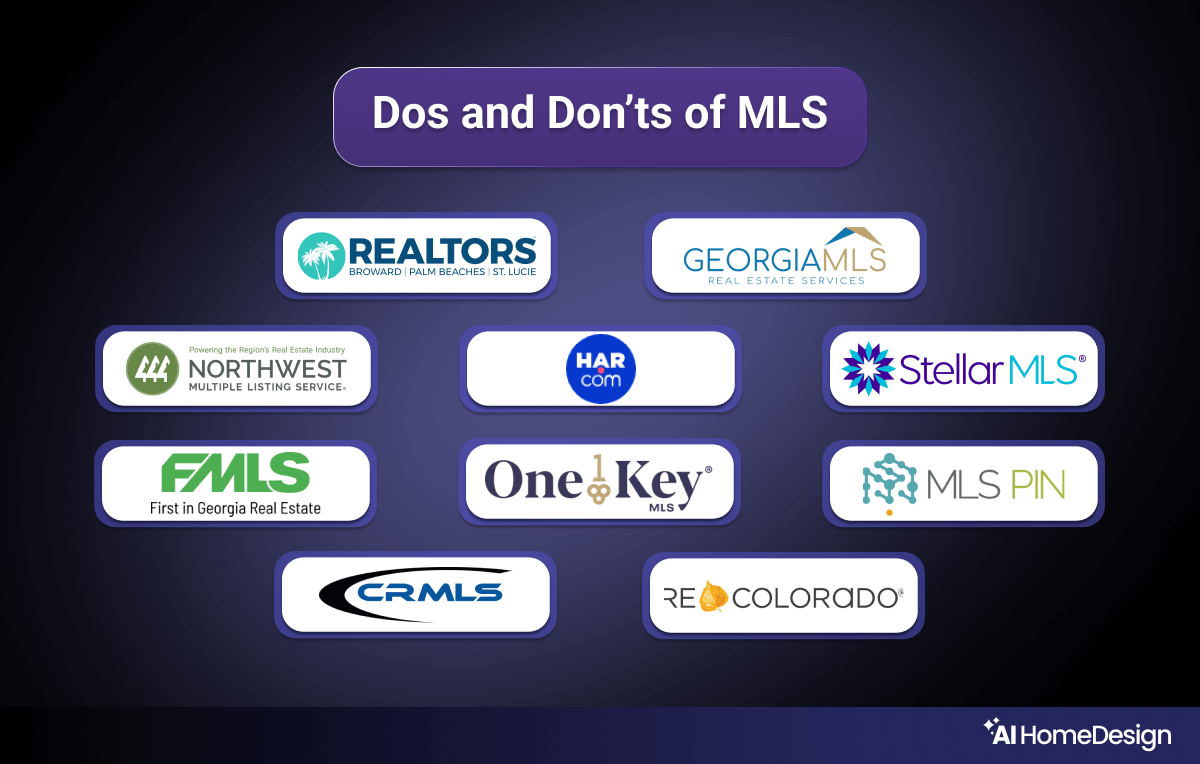Except for rare cases where the owner and buyer know each other through a mutual friend or family member and have already reached a mutual agreement, buyers sift through endless properties online, and sellers try their best to list their for-sale property in the most plain sight possible.
On this journey, the term “Multiple Listing Service,” aka MLS, probably rings a bell for both groups. MLSs are property listing databases established and owned by private real estate organizations or associations to facilitate property information sharing among brokers, agents, buyers, and sellers.
As a buyer, your only responsibility is to browse endlessly until you find that perfect house. As a seller or agent, however, you have more to do if you wish the services of an MLS. Specifically, to make sure your listing is not taken down and stands a chance against hundreds of other properties, it’s imperative to learn about the dos and don’ts of MLS platforms when using their services. Let’s dive straight in!
The Dos and Don’ts of MLSs
Not all MLSs have the same set of specifications or information sections for including various types of details. However, a typical listing across all MLS platforms has three main parts: Photos, descriptions, and property features. In what follows, we’ll outline these specifications that are quite common among most MLSs.
Photos
Photos play a crucial role in representing properties as they’re the first thing to capture buyers’ and tenants’ attention. Therefore, they must showcase your property in its best light. Moreover, when it comes to the dos and don’ts of MLS practices, photos can be quite tricky. As a result, no matter how much you want to edit your photos, it’s important to stick to the rules strictly.
Previously, we discussed how to capture perfect real estate shots and how to find a reliable real estate photo editing company to edit them. However, our main concern here’s how to make sure that you’re not violating MLS regulations regarding your listing photos. The checklist below will help you in this regard.
dos
- Including at least one photo from each room;
- Including at least one shot from the exterior showing the property’s front view clearly. This must be the first photo of your listing;
- Making sure that there are no people in the photos;
- Clearly labeling photos as “Virtually Staged” if you used virtual staging for any rooms to ensure transparency; and,
- Ensuring your photos are saved in the JPG/JPEG format for optimal compatibility with MLS platforms.
don’ts
- Excluding any of the rooms in your listing;
- Digitally removing, adding, or enhancing property fixtures (e.g., cabinetry, window treatments, lighting fixtures, etc.);
- Including brands or branded ads in any form (words, physical products, mottos, etc.);
- Distorting the dimensions of the rooms; and,
- Adding non-existent elements around the property (e.g., trees, fences, or lakes).
Regarding file format, the JPG/JPEG format is the most widely used. Though this is the recommended format due to its balance of file size and quality, some MLSs also allow formats like PNG, heavy-sized TIFF files, or even GIF files for a bit of motion in listing visuals.
Aerial photos, videos, and floor plans all help potential buyers/tenants appreciate the value of your property, though they aren’t among the mandatory file requirements of property listings. The only thing you need to remember about these files is that they should not in any way mislead or confuse the viewer.
If you intend to provide a bird’s-eye view of your property, for instance, you’re not allowed to manipulate the area around the place. Similarly, floor plans and videos must represent the accurate size and dimensions of the property.

Property features
Property features appear under the photos and detail the key characteristics of the home, such as square footage, number of rooms, and included amenities. They usually come in some sort of a bulleted list or a table. Property features also come with their fair share of dos and don’ts of MLS entities. Here’s what you must and mustn’t do regarding your property features.
dos
- Stating the age and area of the property;
- Stating the exact price a buyer/tenant must pay to buy/rent the property;
- Providing the location and address;
- Specifying the property type (single-family, condo, etc.);
- Mentioning the number of bedrooms and bathrooms;
- Listing all the various types of house spaces (pool, garage, basement, attic, etc.);
- Indicating property condition (recently renovated, needs repairs, etc.);
- Listing the available appliances (washer, oven, etc.);
- Clarifying the property’s legal status (under contract, active); and,
- Including tax records.
don’ts
- Revealing personal information of the previous owner or occupant;
- Ignoring local or location-specific MLS rules;
- Providing vague, inaccurate, or overly general information (seriously, does anyone know what “fixer-upper with potential” means?!);
- Overstating or exaggerating property features;
- Mentioning non-existent or under-construction property features as readily available;
- Including personal opinions and interpretations; and,
- Using overly technical terms.
The dos and don’ts of MLS platforms concerning property features are just a fine line to thread as property photos. Any misinformation not only misleads potential clients but can lead to legal repercussions.
Property descriptions
Once you’ve outlined the property features, the next step is to craft a concise and compelling property description in a few sentences. This should highlight the most appealing aspects, like the layout, location, and any unique selling points, giving potential buyers a quick yet engaging overview of what the property offers.
dos
- Describing the property in no more than 250 words (people don’t have the time nor the attention for lengthy text);
- Highlighting key features;
- Using descriptive but down-to-earth language;
- Focusing on the layout and flow of life throughout the property;
- Focusing on relevant features;
- Adding a call to action to encourage buyer engagement; and,
- Being fully honest and transparent in your description.
don’ts
- Wasting space by including contact information (there’s usually a separate space for phone numbers and emails);
- Mentioning commission rates;
- Embedding external links for cybersecurity purposes;
- Using discriminatory language that might offend a certain race, religious group, etc.;
- Mentioning irrelevant information; and,
- Neglecting key details (e.g., number of rooms).
Most MLS platforms adhere to highly similar standards to ensure consistency and compliance with industry regulations. However, there are sometimes minute differences in how certain details should be handled.
Depending on the service you choose, you might notice slight differences regarding the listing requirements and the dos and don’ts of MLS platforms. Those differences, though, are highly unlikely to impact the basic information in your listing.

Types of Multiple Listing Services
Now that you’re familiar with the overall and most important dos and don’ts of MLS platforms, it wouldn’t hurt to know a bit about different MLS types. When it comes to classifying MLSs, we can approach them in three ways:
- Who owns and runs them?
- What types of properties do they feature? and,
- What geographic areas do they cover?
MLSs based on ownership
Regarding the ownership of such databases, there are association-owned MLSs and those run by brokers.
association-owned MLS
Some MLSs are owned and run by real estate associations either at the local or state level. Such listings are only available for agents and brokers who pay a certain membership amount, either on a monthly or annual basis, to access listings.
broker-owned MLS
Some MLSs are formed by brokers who can, within a set framework, determine the rules for property listings and collaboration between members. These regulations often determine various factors such as the allocation of commissions, the guidelines for sharing listings, or the manner of cooperation between brokers.
MLSs based on geographical scope
As for the scope of an MLS, there are local and national multiple listings, and their difference is quite obvious.
local MLSs
Local MLSs are regional databases that allow real estate agents and brokers within a specific geographic area to share property listings. They provide localized access to property information and market data, helping agents collaborate and find properties for clients in a defined market. Typically, a local MLS covers a specific city, county, or metropolitan area and caters to the needs of the agents and brokers working in that region.
national MLSs
National MLSs are broader platforms that provide access to property listings across multiple regions and states, offering a more extensive database of real estate listings. They aggregate listings from various local MLSs and make them available to agents and brokers nationwide, helping them serve clients in multiple regions. While no single entity owns all listings nationwide, some large national MLS-like platforms serve this purpose by compiling data from local MLSs.
MLSs based on property type
Finally, as for the types of properties an MLS showcases, we can categorize MLSs in several ways, depending on how detailed we want the distinctions. However, one general way to categorize MLSs based on the properties they list is as follows:
residential MLSs
Residential MLSs cater to all types of residential properties, making it easier for real estate agents and buyers to find homes within specific regions or markets.
- Standard Residential MLSs (single-family homes, townhouses, condos)
- Luxury MLSs (high-end and upscale properties)
- New Construction MLSs (newly built or under-construction homes)
- Multi-family MLSs (duplexes, triplexes, apartment buildings)
- Vacation/Resort Property MLSs (vacation homes, second homes in tourist locations)
commercial MLSs
Commercial MLSs focus on properties designed for business purposes. They help commercial real estate professionals and investors identify properties that fit specific business or investment needs.
- Standard Commercial MLSs (office buildings, retail spaces, industrial properties)
- Commercial Land MLSs (land for commercial development)
- Multi-family Commercial MLSs (apartment buildings, mixed-use properties)
rental MLSs
Rental MLSs are specialized platforms that list residential and commercial properties available for rent or lease. These MLSs help landlords and property managers connect with potential tenants while providing agents with a way to showcase rental listings.
- Residential Rentals (apartments, homes for rent)
- Commercial Rentals (office and retail space for lease)
- Vacation Rentals (short-term rental properties in vacation destinations)
land and rural MLSs
Land and rural MLSs specialize in vacant land and rural properties. These platforms cater to buyers looking for land to develop for residential, commercial, agricultural, or recreational purposes.
- Land MLSs (vacant lots, development land)
- Agricultural and Rural MLSs (farms, ranches, recreational land)
- Commercial Land MLSs (land for commercial or industrial purposes)
international MLSs
International MLSs offer property listings across multiple countries, sometimes providing access to both residential and commercial real estate outside the United States. As their name suggests, these platforms allow buyers and investors to explore properties globally.
- Residential International MLSs (homes and vacation properties abroad)
- Commercial International MLSs (business properties in foreign countries)

In Conclusion
Understanding the dos and don’ts of MLS platforms is critical for creating an effective and compliant property listing. While specific requirements may vary slightly depending on the platform, the general aspects remain the same.
Agents and sellers should focus on providing accurate information, high-quality photos, and compelling descriptions while avoiding common pitfalls like misleading details or discriminatory language. By following these guidelines, you can rest assured that your listing is both professional and quite effective in reaching potential buyers or tenants.
FAQs
There’s no single “best” MLS as it depends on factors such as location, type of property, and your specific needs as a buyer or seller. The idea behind the existence of MLSs is that they create a focal point for property listing based on different geographical regions.
Some of the most popular MLS platforms in the U.S. include Bright MLS(for the Mid-Atlantic region), Stellar MLS(Florida and beyond), and California Regional MLS(CRMLS), which is the largest in the U.S.





